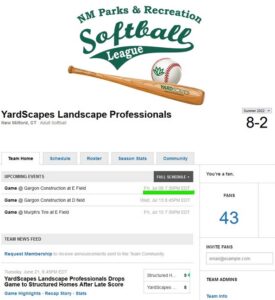
We hope you had a enjoyable long weekend. It’s always nice to have a holiday fall on a weekday because there is no rest for a landscaper – especially in summer.
Less than two weeks ago, four team members joined me for an interactive, in-depth facility tour and educational sessions at R.P. Marzilli & Co. headquarters near Boston, Massachusetts sponsored by the National Association of Landscape Professionals (NALP). We learned about their processes, successes, and challenges. We were also treated to a private reception to view one of their beautiful projects at New England Botanic Garden at Tower Hill.
In less than two weeks, I will once again be heading to Arlington National Cemetery and the National Mall with a team of volunteers for NALP’s Renewal & Remembrance. Each year, lawn care and landscape professionals from across the country donate their time and expertise to enhance the grounds at Arlington National Cemetery and honor the men and women buried there. This is the second year NALP will have an additional volunteer location at the Lincoln Memorial.

NALP FIELD TRIP – JUNE 23 & 24

24 Hours of educational Sessions & Networking

(L-R) Dawn, Becky, Mike, Tom & Shayne
Over 200 landscape professionals from across the country attended.
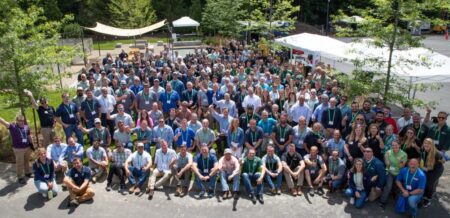

2022 Renewal & Remembrance – July 18
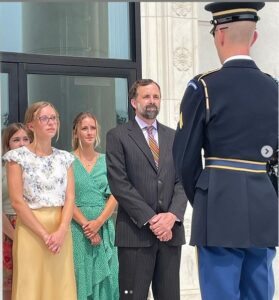
Shayne and his daughters at Renewal & Remembrance in 2021
This year’s volunteer event will be held on July 18th at Arlington National Cemetery and the Lincoln Memorial on the National Mall.
DROUGHT STRESS
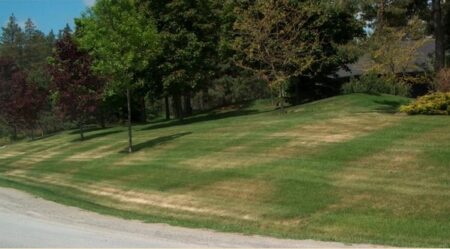
In our last issue we spoke about the best practices for watering your trees, shrubs, gardens, and lawn during the hot and dry summer months. If you do not use a sprinkler system, or if it is inadequate or not working properly, you may find that areas of your lawn appear to be dying when there is insufficient rainfall. Please be assured that with drought stress, it is only temporary and the grass is not in danger. Instead, it is going dormant to protect itself. When this happens, the grass will grow slower, turn to brown, and thin out as it dehydrates. The crown of the plant can survive for weeks without any water and the slightest sprinkle is enough to keep it alive until a more significant rainfall arrives.
The length of the drought can also determine the length of time the turf will need to bounce back so don’t get discouraged if your lawn isn’t turning back to green after a rainstorm or two. The process can take anywhere from a few days to a few weeks depending on various factors like the length of the drought, the soil condition, and the type of grass.
If your lawn is extremely dry, do not fertilize it because this will only increase the stress on the lawn. We also recommend that you avoid walking on the grass because the dry and brittle blades will break very easily.
We monitor the weather and during dry spells, you may notice that when we mow, we leave the grass a little higher. This is to help strengthen the roots and shade the soil.
Whenever possible, please follow the Proper Watering Techniques we mentioned last issue. As always, please contact your landscape consultant if you have any concerns.

DEADHEADING
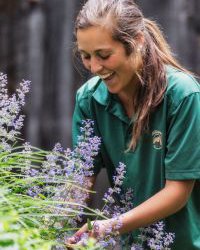
Deadheading, or removing spent blooms, does more than keep your plants and garden looking neat and pretty.
Believe it or not, the purpose of the beautiful blossoms on a flowering plant is not for our enjoyment but rather to attract pollinators, set seeds, and ensure the survival of the species.
While perennials follow a more strict seasonal life-cycle, annuals (and some perennials) can be encouraged to produce more flowers throughout the summer season. If you deadhead the spent blooms before they set seeds, the plant produces more flowers in hopes of making more seeds. If the plant is allowed to “go to seed”, it thinks its job is done and will stop forming flowers. This is what happens when your petunias become “leggy” and scraggly.
Another reason to deadhead is to keep self-sowing plants in their proper spaces. Unless you want them to spread, flowers like phlox, daisies, evening primrose, and columbine will appear outside their beds and in places you don’t want them.
Make sure that when you are deadheading you are pinching or cutting below the base of the flower where the developing seed pod is. Just removing the old flower is not enough.
